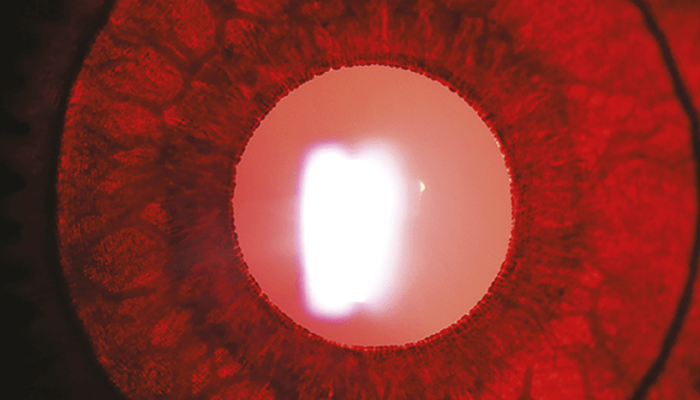
How did you get interested in ophthalmology and what’s your experience so far?
My dad has been in ophthalmic imaging for over 30 years (and still is), so I had some insight as to what the job entailed – and he taught me a few retinal imaging techniques. My dad helped set up the imaging service at Aintree Hospital years ago, and I remember going for work experience with him in high school. Following somewhat in his footsteps, I started working for a diabetic eye screening program before moving onto a company called Medical Imaging UK, which delivered ophthalmology imaging services to several hospitals. Then a position opened up at my current hospital, where I am now the manager of the imaging team. We’re historically a busy unit, but we’re getting busier every year.
What does a typical day look like for you?
There's a team of us, and within the team, there's some photographers and some technicians, who all do different roles. In our unit we can do over 200 procedures per day. Patients often have multiple imaging procedures done on different machines. We can do OCTs, fundus imaging, ultra wide field imaging, fluorescein angiography, slit lamp imaging,. There's a whole bunch of other things that we do as well. I'm called in to review patients with macular degeneration and diabetic retinopathy as well. I'm involved in helping monitor the most stable patients – those that might not necessarily need treatment. With the aging population, the upskilling of imaging professionals is becoming more popular across the UK. The obstacle for imaging professionals is to actually review patients because we are used to looking at these images day in and day out, so we're used to picking up pathology, we know what's normal and what's not. So, it makes sense to train people like myself to do these kinds of things.
What interests you about imaging? Are there things about it you find particularly challenging, or important?
Over the years, we’ve seen imaging become increasingly essential – all the sub specialities rely on us; we’ve got a growing cornea service (hence the slit lamp), but there’s a long list – pediatrics, neuro-ophthalmology, glaucoma, and so on – that all depend on certain types of imaging. Even though I’ve been doing this job for well over 10 years, I still find things I’ve never seen before – and that keeps it interesting!
What is the best part of working in eye care and why?
The progress that patients make! In imaging, we can literally see the improvements on our screens, but seeing the impact on patients is most rewarding. For example, I was recently helping monitor a DMEK patient – the first such patient at our trust – with slit lamp imaging and anterior segment OCT, and it was so great to see the patient go from hand movements to 6/12 vision in the space of a week. When you work in eye care, you have some involvement in changing patients’ lives.
What made you want to enter the contest?
Before COVID-19, I went to a Haag-Streit slit lamp imaging course – and that’s where I was able to try the BX 900. We didn’t have a system at the time, but I was “shopping” as I recognized the growing need in our cornea service. Ultimately, we managed to acquire one, but, while researching options, I’d come across the incredible images from the previous year’s slit lamp imaging competition. Once I got the kit, I figured I’d give it a go – especially, if I came across something interesting enough.
My image – “Ocular Albinism” – came second, which I’d say is pretty good for my first attempt!
If you were not working in ophthalmology what do you think you would be doing?
I got into the University of Liverpool to do music when I left college which is completely different. However, at the same time I had just applied for the job as a retinal screening grader for the diabetic eye screening service. I didn't really think anything of it and then the same week I got the letter saying that I'd been accepted for the job so I kind of had to make the decision what to do – go to university and do music or get a job! So I went with that and I thought maybe I'd do it for a year, get some money and go back to university, but I ended up just sticking with it and I've kind of moved into different areas of it but I’ve stuck with ophthalmology.
What do you think are some of the biggest challenges for imaging work in ophthalmology?
Sheer numbers! Trying to maintain a high quality service in the face of increasing numbers of patients will be a familiar challenge for many. Fortunately, that grand challenge is balanced by aspects that keep the job fresh – like exciting new technologies.
It’s interesting to see that there is now a new degree in ophthalmic imaging, which may bring a little more structure to the profession and attract more people to the field. We need them!
